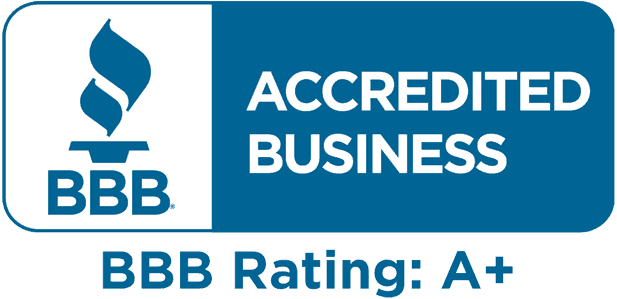Many Americans look forward to being covered by Medicare when they turn 65. Others have an employer-based health insurance plan and would prefer to delay their enrollment in Medicare by a year or more. While you don’t have to sign up immediately when you turn 65, you might have to pay a penalty or higher premiums, depending on the timing and reasons for your delay.
Let’s take a look at the process for signing up for Medicare when you turn 65, and some of the factors to consider when deciding whether to delay your enrollment.
WHEN DOES MEDICARE COVERAGE BEGIN?
First, when do you become eligible for Medicare? For most Americans, you’ll be eligible to sign up during a 7-month period surrounding your 65th birthday. This window includes your birthday month, the three months immediately before it, and the three months immediately following it. It’s referred to as your Initial Enrollment Period.
If you’re already receiving Social Security benefits by the time you turn 65, such as retirement or disability payments, then you may be automatically enrolled. Otherwise, you’ll have to sign up in order to start receiving Medicare coverage.
If you enroll before your birthday, your coverage should start on the first day of the month of your birthday. However, if you enroll towards the end of your Initial Enrollment Period, it could take up to 3 months for your coverage to start. So if you’ll be relying on Medicare as your primary form of coverage, apply early so you can avoid any unexpected gaps in coverage.
WHAT PLANS DO I GET?
There are several different Medicare plans to choose from, but the simplest option contains two parts: Original Medicare Parts A & B. You’ll have to decide if you want to enroll in both of these plans, or just one. Part A covers hospital and nursing home care, while Part B covers doctor’s visits and other outpatient services.
Since Medicare Part A has no monthly premium for most beneficiaries, there is no downside to enrolling in it, even if you have other health insurance coverage. Medicare Part B, however, has a monthly premium of $135.50 for most beneficiaries, so you may prefer to delay your Part B enrollment if you have alternate coverage from your employer or your spouse’s employer.
Be sure to verify whether your coverage will permit you to delay your enrollment without having to pay a penalty later. If you or your spouse work for a company with more than 20 employees, find out if you are covered under a group health plan. If not, or if your company has fewer than 20 employees, you should enroll in Plan B now to avoid a late enrollment penalty.
In addition to Original Medicare, you may choose to enroll in Medicare Part D for prescription drug coverage. As with Part B, you’ll pay a late enrollment penalty if you decide to delay your coverage now and enroll in it later. So, you should consider signing up for Part D during your Initial Enrollment Period, unless you have qualifying coverage from your employer.
You may also decide to sign up for Medicare Supplement Insurance, also known as a Medigap policy, which covers some of the “gaps” in Original Medicare. You’ll be eligible to sign up for a plan during the first 6 months after you turn 65 and are enrolled in Medicare Part B.
Although there’s no official penalty for signing up later, this is the only period when you won’t be subjected to medical underwriting by your insurer when you apply for a policy. You may have fewer options or have to pay a higher premium if you want to enroll later.
Finally, you may choose to enroll in a Medicare Advantage plan through a private insurer, which includes Part A & B as well as additional coverage. As with Medigap, there’s no late enrollment penalty, but you can only sign up or switch plans during specific periods each year.
MEDICARE THROUGH YOUR EMPLOYER
Deciding whether to enroll in Medicare in addition to or instead of your employer-based plan can be tricky. One thing to consider is whether Medicare will be your primary or secondary payer. In most cases, Medicare will be your primary payer if there are less than 20 employees at your company, and it will be the secondary payer if there are 20 or more.
When you make a claim, your primary payer will cover its share first. This means, if Medicare is your primary payer, you’ll first be covered up to the amount that Medicare pays (typically 80% of the Medicare-approved fee). If there are still costs remaining, your secondary payer will cover their share according to its policies, and you will pay the rest.
It may be worth it to delay your enrollment in Part B if your employer-based health plan is your primary payer and offers better coverage than Medicare. If this plan covers all or most of your health care costs, there will be little left over for Medicare to pay, and it won’t be worth paying a monthly Part B premium for insurance that you don’t need.
However, if your employer-based health plan offers minimal coverage, or if Medicare would be your primary payer, then you should enroll in Part B. If Medicare would be your primary payer, but you haven’t enrolled in Medicare, your employer-based coverage may only pay for 20% of the bill, assuming that Medicare will cover the other 80%. That could end up leaving you with a large bill to pay out-of-pocket that could be avoided if you enrolled in Medicare.
In some cases, you may choose to drop the coverage offered by your employer and rely solely on Medicare for your health care costs. This may be a good option if your employer-based plan has high premiums or out-of-pocket costs. However, you should only do this if you’re sure it’s the right choice because you won’t be able to get back on the plan once you leave it.
MEDICARE WITHOUT AN EMPLOYER
If you don’t have health insurance through your current employer, then deciding whether to enroll in Medicare is much easier. Even if you have other coverage, such as a veterans’ health plan or a retirement plan offered by a prior employer, this doesn’t count as an alternative to Medicare. If you aren’t covered by a current employer, then you should enroll in both Parts A & B.
Medicare will be the primary payer for most of your health care costs, although you will still have to pay some out-of-pocket expenses, such as copays and coinsurance. If Medicare will be your only coverage, you might also want to enroll in a Medicare Advantage or Medigap plan to reduce these out-of-pocket expenses and lower your deductible.
If you take prescription drugs, you can also consider enrolling in a prescription drug plan (Part D). However, if you have “creditable coverage” through another plan, you can delay enrollment in Part D without facing a penalty. In this case, employer-based plans, veterans’ benefits, and COBRA policies may all be considered “creditable coverage”.
PENALTIES FOR NOT SIGNING UP
The penalty for delaying your Medicare enrollment depends on which part of Medicare you are enrolling in. For Part C (Medicare Advantage) and Medigap plans, there is no standard penalty, but you may be subject to medical underwriting and have to pay higher premiums.
For Part A, there is no late enrollment penalty if you’ve worked 40 quarters and are eligible for Part A without a premium. If you haven’t worked the minimum number of years and pay a Part A premium, then you’ll pay a 10% penalty for each year you delayed, times two. For example, you’ll pay the penalty for six years if you waited for three years to sign up.
For Part B, you’ll pay 10% more for each full year that you delayed signing up. For example, if you wait for three years, you’ll have to pay 30% more. Since this penalty applies indefinitely, this can be the most expensive part of Medicare to enroll in if you don’t sign up right away.
For Part D, you’ll have 1% added to your premium for each full month you didn’t have coverage under Medicare or “creditable coverage” through another insurer.
Remember, if you have qualifying coverage through your employer, then you won’t have to pay a penalty when you sign up for Parts B & D. Even if you work until you turn 80, you can wait to sign up for Medicare until then if you have qualifying employer-based coverage. You’ll have an 8-month Special Enrollment Period (SEP) to sign up when you lose your coverage.
HOW TO APPLY FOR MEDICARE
Once you’ve decided which plans to sign up for, you’re ready to begin the enrollment process. You can apply for Original Medicare during your Initial Enrollment Period or Special Enrollment Period. You can apply directly on the Social Security website in as little as 10 minutes.
If you want to sign up for a Medicare Advantage Plan (Part C) or Prescription Drug Plan (Part D), use the Plan Finder Tool to compare plans in your area. When you find a plan you like, you may need to call up the insurer to verify your eligibility and submit an application. You can also use the Medigap Policy Search to find a Medicare Supplement Insurance plan.
If you’re having trouble choosing a plan, or aren’t sure if you can delay your enrollment without facing a penalty, reach out to the team at The Medicare Store. Our insurance agents will get back to you to schedule a phone call or an in-person consultation to discuss your options.



